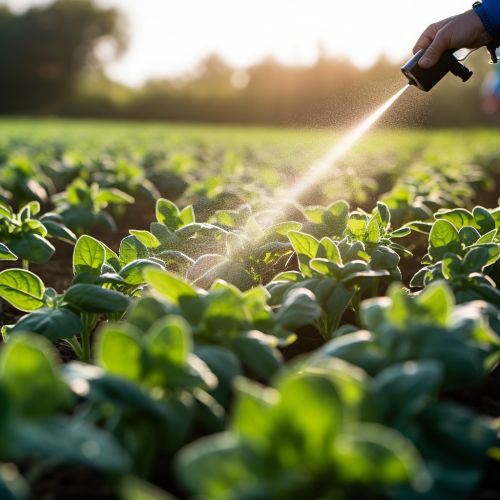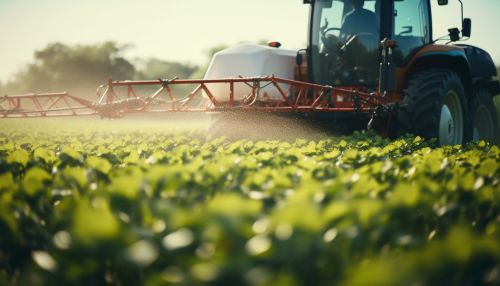Biopesticides
Introduction
Biopesticides are a type of pesticide derived from natural materials such as animals, plants, bacteria, and certain minerals. They encompass a broad range of products including microbial pesticides, plant-incorporated protectants, and biochemical pesticides. Biopesticides are considered an important alternative to conventional chemical pesticides due to their specificity towards targeted pests and their minimal impact on non-target organisms and the environment.


Types of Biopesticides
There are three major types of biopesticides: microbial pesticides, plant-incorporated protectants (PIPs), and biochemical pesticides.
Microbial Pesticides
Microbial pesticides consist of a microorganism (e.g., a bacterium, fungus, virus or protozoan) as the active ingredient. Microbial pesticides can control many different kinds of pests, although each separate active ingredient is relatively specific for its target pest[s]. For example, there are fungi that control certain weeds, and other fungi that kill specific insects.
Plant-Incorporated Protectants (PIPs)
Plant-Incorporated Protectants (PIPs) are pesticidal substances that plants produce from genetic material that has been added to the plant. For example, scientists can take the gene for the Bt pesticidal protein, and introduce the gene into the plant's own genetic material. Then the plant, instead of the Bt bacterium, manufactures the substance that destroys the pest. The protein and its genetic material, but not the plant itself, are regulated by EPA.
Biochemical Pesticides
Biochemical pesticides are naturally occurring substances that control pests by non-toxic mechanisms. Conventional pesticides, by contrast, are generally synthetic materials that directly kill or inactivate the pest. Biochemical pesticides include substances, such as insect sex pheromones, that interfere with mating, as well as various scented plant extracts that attract insect pests to traps.
Advantages of Biopesticides
Biopesticides offer several advantages over conventional chemical pesticides. They are usually inherently less harmful than conventional pesticides. They are generally target-specific, with little or no impact on non-target organisms and the environment. They often decompose quickly, thereby avoiding the pollution problems associated with more persistent chemical pesticides. In addition, the use of biopesticides can greatly reduce the use of conventional pesticides, thereby reducing the overall amount of pesticide residues in the environment.
Limitations of Biopesticides
Despite their advantages, biopesticides also have some limitations. They are often slower to act than conventional pesticides. Some biopesticides have narrow host ranges, which can limit their usefulness in controlling pests. In addition, biopesticides can be more sensitive to environmental conditions than chemical pesticides, which can affect their effectiveness.
Regulatory Aspects
In many countries, biopesticides are subject to regulatory requirements similar to those for chemical pesticides. In the United States, for example, the Environmental Protection Agency (EPA) regulates the distribution, sale, and use of all pesticides, including biopesticides. The EPA evaluates the potential risks of pesticides to human health and the environment before allowing them to be sold or used.
Future Prospects
The use of biopesticides is expected to increase in the future as part of integrated pest management (IPM) strategies. IPM is a sustainable approach to managing pests by combining biological, cultural, physical and chemical tools in a way that minimizes economic, health, and environmental risks. Biopesticides can play a key role in IPM by providing effective pest control while minimizing the use of more harmful chemical pesticides.
